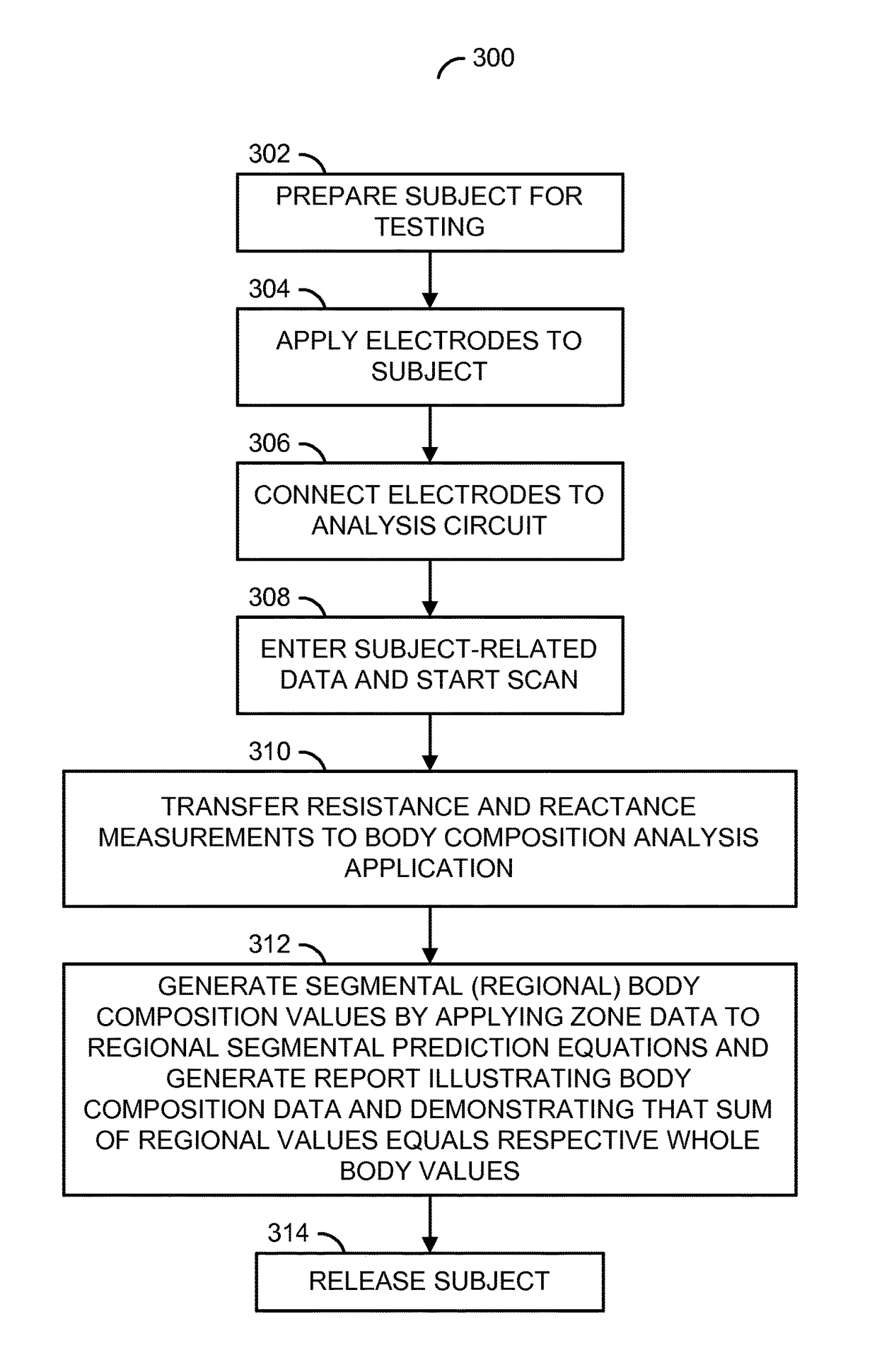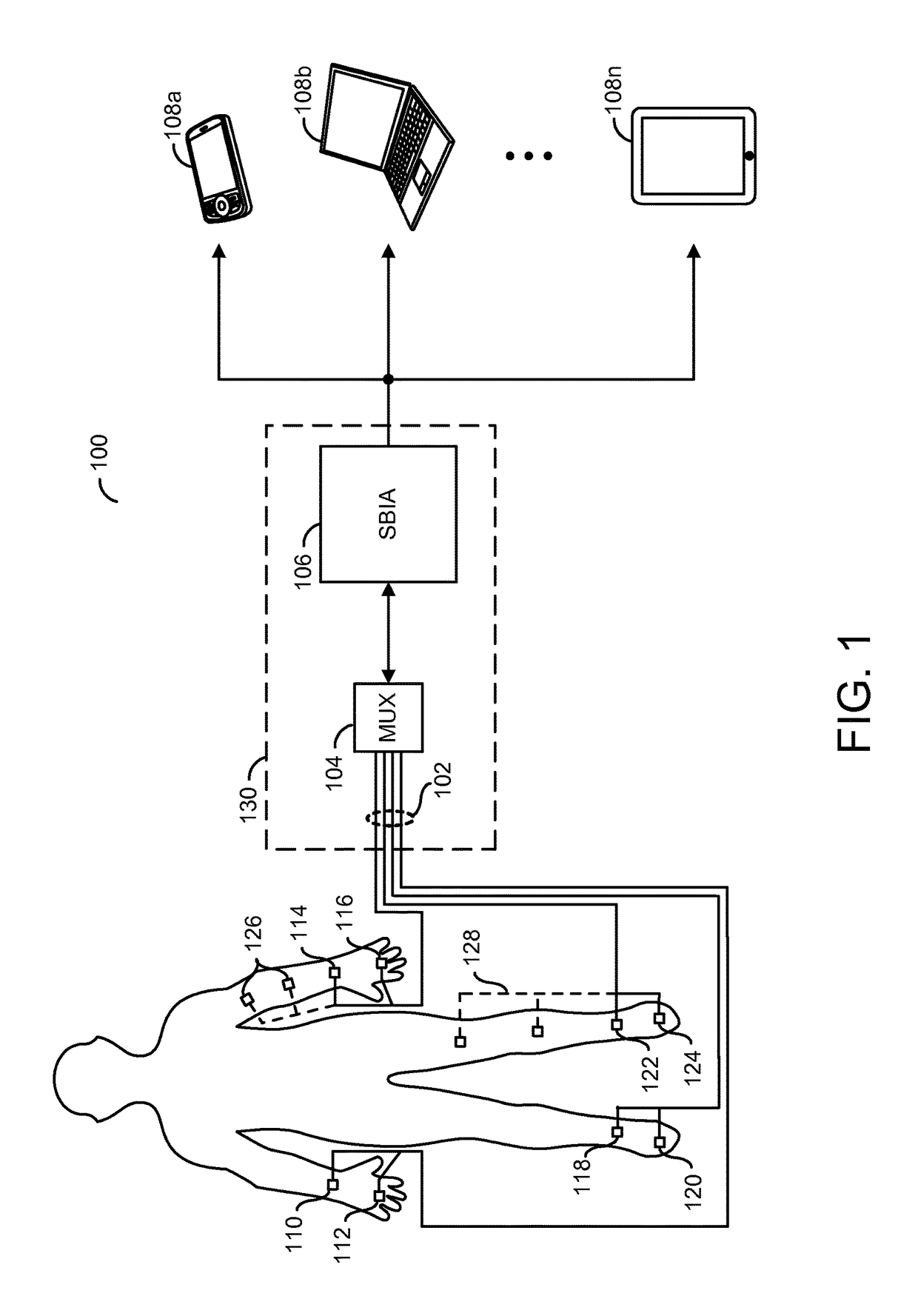Determining body composition through segmental bioelectrical impedance analysis (BIA)
a bioelectrical impedance analysis and body composition technology, applied in the field of biometric data, can solve the problems of low accuracy and repeatability, troublesome task of hydrodensitometry, and inability to apply to the elderly or to patients, and achieve the effect of quick and easy production
- Summary
- Abstract
- Description
- Claims
- Application Information
AI Technical Summary
Benefits of technology
Problems solved by technology
Method used
Image
Examples
Embodiment Construction
[0019]Referring to FIG. 1, a diagram of a system 100 is shown in accordance with a preferred embodiment of the present invention. In various embodiments, the system 100 may comprise a plurality of leads 102, a multiplexing circuit 104, an analysis circuit 106, and at least one of a number of electronic devices 108a-108n. The leads 102 are configured to connect the multiplex circuit 104 to a plurality of electrodes 110-124 attached to a subject. In various embodiments, each of the leads 102 clips to a respective one of the electrodes 110-124. In one example, the electrode 110-124 comprise stick on electrodes similar to electrodes used for taking electrocardiograms (EKGs). The stick on electrodes generally avoid high impedance bony structures on the wrist, the fingers of the hand, the ankle, and the bottoms of the feet of the subject, which improves measurement accuracy, repeatability, and segmental body composition results.
[0020]The electrodes 110, 114, 118, and 122 are configured as...
PUM
 Login to View More
Login to View More Abstract
Description
Claims
Application Information
 Login to View More
Login to View More - R&D
- Intellectual Property
- Life Sciences
- Materials
- Tech Scout
- Unparalleled Data Quality
- Higher Quality Content
- 60% Fewer Hallucinations
Browse by: Latest US Patents, China's latest patents, Technical Efficacy Thesaurus, Application Domain, Technology Topic, Popular Technical Reports.
© 2025 PatSnap. All rights reserved.Legal|Privacy policy|Modern Slavery Act Transparency Statement|Sitemap|About US| Contact US: help@patsnap.com



